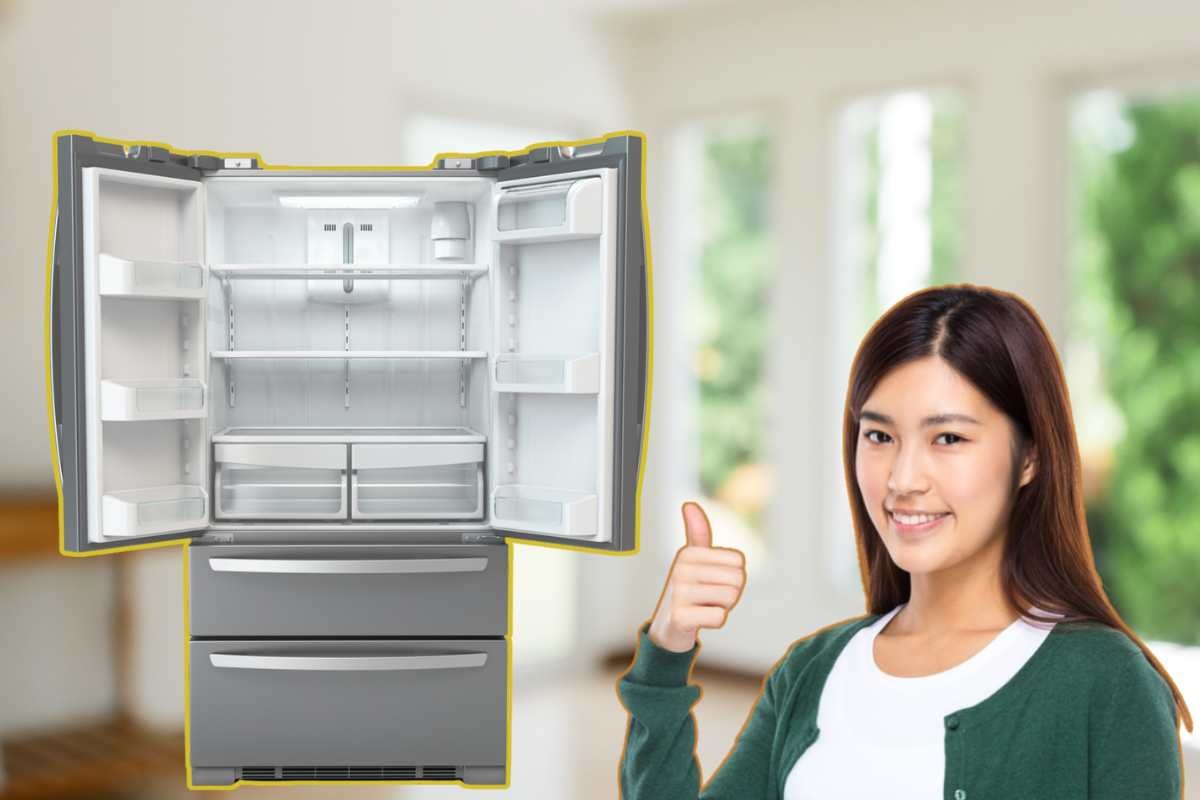How to Safely Clean Black Mold Out of Your Fridge: Step-by-Step Guide
Is that dirt or black mold in your refrigerator?
More than being merely an unpleasant sight— black mold can pose serious health risks and affect the overall functionality of your appliance. The fridge is one of the most important places in your home to keep clean because it stores the food you and your family consume.
When black mold invades, it thrives. This is particularly true for an environment that is cool and damp, and they can also contaminate food.
Under such circumstances, getting things clean and running properly has to be your priority.
While the idea of tackling this may seem daunting, with the right approach, tools, and techniques, you can clean black mold out of your fridge safely and effectively.
This guide will walk you through every step…
Understanding the Risks of Mold in the Fridge

You can get black mold in your fridge through a variety of sources. That fungus is resilient, and It thrives in environments where moisture and organic matter are present.
From spilled food to condensation, or leaky seals, you cannot say for sure, which source is culpable in your refrigerator.
The dangers go beyond aesthetics.
Mold spores can spread through the fridge and potentially contaminate your food, leading to health risks like allergies, respiratory issues, and, in severe cases, infections.
But do you know…
Addressing mold promptly helps safeguard your health and also extends the lifespan of your fridge.
Let’s get into HOW…
Preparing to Clean Black Mold Safely
Before diving into the cleaning process, preparation is essential to ensure both safety and effectiveness.
Mold spores, as we have explained in this blog, are microscopic and can spread easily if disturbed. So it is important that you tread with caution and care.
Here are the critical steps to take before starting:
-
Wear Protective Gear:
Cleaning mold requires adequate protection. Wear gloves, preferably those made of rubber or nitrile, to avoid skin contact.
A mask designed to filter mold spores (e.g., an N95 respirator) is essential to protect your respiratory system. Use safety goggles to shield your eyes from airborne spores or cleaning agents.
-
Turn Off and Empty the Fridge:
Start by unplugging the refrigerator. This prevents electrical hazards and makes cleaning more manageable.

Remove all food items, even unopened ones, as mold spores can infiltrate packaging.
Discard any items showing visible signs of contamination and place salvageable food in a cooler with ice packs to keep it fresh.
-
Gather Cleaning Supplies:
The cleaning agents you’ll use depend on personal preference and availability. While commercial mold removers are effective, natural alternatives like distilled white vinegar or baking soda also work well.
You’ll also need microfiber cloths, sponges, a scrub brush, and a bucket of warm water. For deeper cleaning, have a spray bottle and a toothbrush handy for reaching tight spaces.
Step-by-Step Guide to Cleaning Black Mold Out of Your Fridge
Once you’re all prepared, it’s time to begin the cleaning process. Each step ensures that the mold is thoroughly removed and that your fridge remains mold-free in the future.
-
Step 1: Remove Shelves, Drawers, and Detachable Parts
Start by removing all detachable components from your refrigerator, including shelves, crisper drawers, and door bins.
But before that, don’t forget to put off the refrigerator… winks.
These parts often harbor hidden mold and require thorough cleaning. Place them in a basin of hot, soapy water to soak while you focus on the interior of the fridge. If mold is visible on these parts, they may need special attention later.
-
Step 2: Wipe Down Loose Mold
Using a dry microfiber cloth or paper towel, gently wipe away visible mold from the fridge’s interior.
Avoid scrubbing at this stage, as it can spread mold spores further. This step reduces the amount of mold you need to clean during the deeper sanitization phase.
-
Step 3: Apply a Cleaning Solution
Prepare your cleaning solution based on your preference. A mixture of one part vinegar to one part water works effectively for most mold infestations.
Alternatively, combine one tablespoon of baking soda with a quart of water for a mild abrasive solution.
For tougher stains, diluted bleach (one tablespoon of bleach per gallon of water) may be used. Do this after you have annihilated the mold, but ensure the fridge is well-ventilated to avoid inhaling fumes.
Spray the solution generously onto all moldy surfaces inside the fridge, including corners, seals, and crevices.
Let it sit for 10–15 minutes to loosen the mold and kill spores. This waiting period is crucial for ensuring effective mold removal.
-
Step 4: Scrub Moldy Surfaces
Using a scrub brush or sponge, clean the treated areas thoroughly. Pay special attention to rubber door seals, as they can trap moisture and harbor stubborn mold.
For hard-to-reach areas like grooves and small gaps, use a toothbrush dipped in the cleaning solution.
Take your time at this stage of the cleaning operation to ensure every surface is cleaned thoroughly and properly.
-
Step 5: Rinse and Wipe
After scrubbing, rinse all surfaces with a clean sponge or cloth dipped in warm water. This removes residual cleaning agents and any remaining mold particles.
Thereafter, use a dry microfiber cloth to wipe down all surfaces.
This ensures no moisture is left behind. As we already know, mold thrives in damp conditions, so thorough drying is critical.
-
Step 6: Clean and Dry Removable Parts
Return to the shelves, drawers, and other removable parts soaking in soapy water. Scrub them with a sponge or brush to remove any mold or debris.
Rinse well with clean water.
Subsequently, dry completely with a towel. Ensure no water remains in hard-to-reach spots before reinserting these parts into the fridge.
-
Step 7: Replace Food and Turn On the Fridge
Once the fridge is completely dry and clean, replace the shelves, drawers, and bins.
Inspect food items before returning them to the fridge to ensure they are mold-free. Plug the fridge back in and adjust it to the appropriate temperature to maintain food safety.
Preventing Black Mold in the Future

Cleaning your fridge is only half the battle. To prevent black mold from returning, adopt these maintenance habits:
Regular Cleaning: Wipe down the fridge interior weekly to remove spills and crumbs that can encourage mold growth. Deep clean every few months.
Check and Replace Door Seals: Inspect rubber gaskets regularly for mold or wear. Clean them with a vinegar solution, and replace them if they’re damaged to prevent moisture from seeping in.
Manage Moisture: Minimize condensation by keeping the fridge at the proper temperature (37–40°F) and ensuring adequate air circulation. Avoid placing hot or uncovered foods inside the fridge.
Store Food Properly: Use airtight containers for perishable items to prevent spills and limit mold exposure. Discard expired or spoiled food promptly.
Inspect for Leaks: Regularly check for water pooling inside the fridge, as leaks can create a breeding ground for mold. Address any mechanical issues immediately.
Special Considerations for Stubborn Mold
If you’ve followed these steps and still notice persistent mold or an unpleasant odor, additional measures may be necessary.
For deep-seated mold in hard-to-reach areas or hidden compartments, you might need to disassemble parts of the fridge or consult a professional appliance cleaner near you today.
Persistent issues could also indicate a more significant problem, such as mold infiltrating the fridge’s insulation or a malfunction causing excess moisture.
Don’t let that mold destroy your appliances.
When to Seek Professional Help
While most cases of black mold can be handled with the above steps, certain situations warrant professional intervention. If you have a mold allergy or respiratory condition, it’s safer to hire a certified mold remediation specialist to clean your fridge.
Similarly, if the mold is extensive or keeps recurring despite thorough cleaning, a professional can identify and address the root cause.
Conclusion
Beyond aesthetics and hygiene, maintaining a mold-free fridge has tangible benefits. A clean fridge operates more efficiently, saving energy and prolonging its lifespan.
It also ensures that your food stays fresh longer and reduces the risk of mold-related health issues.
By investing time in proper cleaning and prevention, you create a healthier and more pleasant kitchen environment for you and your family.
Cleaning black mold out of a fridge may not be the most glamorous household task, but it’s a vital one. When you follow the step-by-step guide as outlined above, you can tackle the issue effectively and prevent reoccurrence.
With regular maintenance and proper care, your fridge can remain a safe and mold-free haven for your food.


